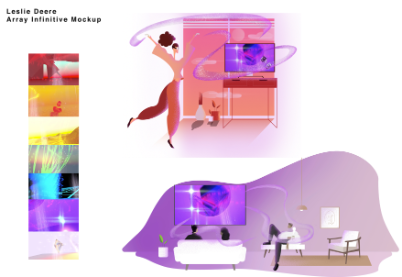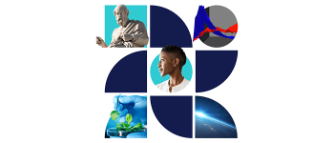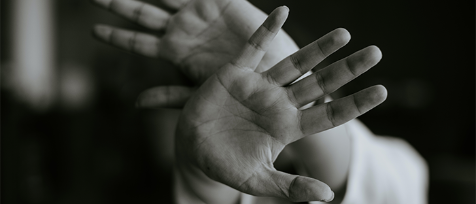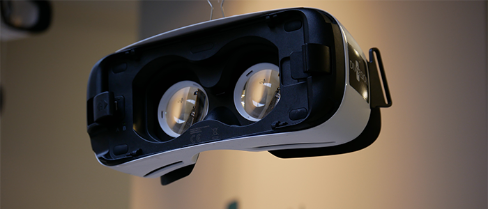Research Project Showcase
Here you can find research projects from researchers within the IELabs community.
Array Infinitive
Personnel: Leslie Deere, Stuart Cupit, Chris Speed and Ross Flight
Institutions: Glasgow School of Art, Centre for Contemporary Art
Development Sponsorship with Solarflare Studio
This practice-based research examines audience experience in Virtual Reality. The research draws upon audio-visuals generated live and performed to a group in VR. This study pushes the envelope on ways in which experimental live performance in VR impacts an audience, and investigates the affect of live content whilst immersed in the virtual space. This research is being supervised by Dr Marianne Greated (Head of Painting, School of Fine Art, GSA) and Francis McKee (Director, Centre for Contemporary Art Glasgow) and Ronan Breslin (School of Simulation & Visualisation GSA). The goal of this project is to evoke a heightened altered state experience, using VR as a vehicle to deepen the immersion. This work aims to create a meditative encounter utilising sound, frequency, light and the colour spectrum. A key element of this project is the group aspect, which generates a shared experience.
Pilot tests (covid dependent) to take place at CCA July 13-18 2021. Exhibition version (covid dependent) to take place at CCA 22-25 July 2021.
More information here: https://lesliedeere.com/VR.html

Edify
Personnel: Macpherson = PI, McDonnell = Co-I
Institutions & Funders: UofG ,Sublime/Edify and Innovate UK
This project is using Virtual Reality to test how the senses and anxiety interact with each other. We will be seeing how participants perform on sensory tasks while being transported to different environments, each encouraging different levels of anxiety. We hope that this will help us better understand the perceptual experience of autistic people in their everyday lives.
More information here: https://www.edify.ac/

Sensorily Stressed: Using Virtual Reality Technology to Examine the Relationship between Sensory Sensitivities and Anxiety
Personnel: Elliot Millington, Dr David Simmons and Dr Neil McDonnell
Institutions: University of Glasgow, Edify/Sublime
ESRC
This project is using Virtual Reality to test how the senses and anxiety interact with each other. We will be seeing how participants perform on sensory tasks while being transported to different environments, each encouraging different levels of anxiety. We hope that this will help us better understand the perceptual experience of autistic people in their everyday lives.
More information here: https://simmonslab.psy.gla.ac.uk/projects/

Using VR to understand the inner perceptual world of autism
Personnel: Sarune Savickaite, Dr David Simmons and Dr Neil McDonnell
Institutions & funders: University of Glasgow and Edify.ac
ESRC industrial partnership with Edify.ac (Sublime Ltd)
Autism, a common neuro-developmental condition, affects at least 1% of the UK population. Autism is partly characterized by sensory difficulties, such as over- or under-responsiveness to certain types of lighting and everyday noises, and an almost obsessive desire for particular types of sensory stimulation, known as “sensory seeking” behaviour. To date, most research on sensory aspects of autism has used parent/caregiver-reports, combined with a smaller amount of self-report data from those able to speak for themselves and further data from lab-based experiments. So far, however, despite these data providing us with some fascinating insights, we have yet to fully appreciate precisely what is going on in the “inner perceptual world” of autism, although it is clear that it is qualitatively different from what typical individuals experience.In this project we propose the use of Virtual Reality (VR) technology to explore this inner perceptual world. VR technology has become much less bulky and much more affordable in recent years, and the availability of software has burgeoned. In our experiments we aim to explore perceptual worlds by asking people to illustrate their experiences using the powerful and compelling creative tools now available for use in VR environments, such as Tiltbrush (www.tiltbrush.com) . We will use a combination of quantitative analysis of participants’ responses to questionnaires with qualitative analysis of both their verbal descriptions (if available) and of their audio-visual creations to further understand the nature of their inner perceptual worlds. Furthermore, we will use our experience in objective behavioural experimentation to embed game-like tasks into the created environments to explore our participants’ perceptual limits more objectively. This collaborative project will further our understanding of the inner perceptual world of autism and result in the development of a suite of versatile VR software tools together with new techniques of creative expression for those with communication difficulties.
More information here: https://simmonslab.psy.gla.ac.uk/projects/






